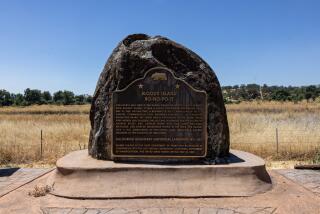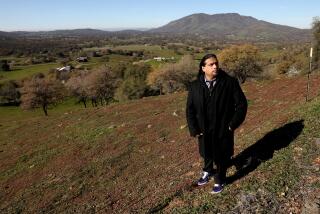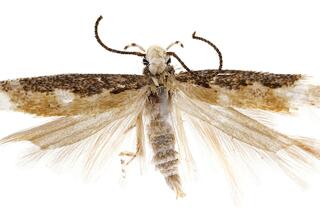Speaking Of: : Keeping Track of Soviet Names
- Share via
Just about everything seems to be changing in the Soviet Union, including names. The sprawling state occupying one-sixth of the world’s landmass is still technically called the Union of Soviet Socialist Republics, but even that will change when a new federal treaty is signed.
President Mikhail S. Gorbachev’s latest idea for a name proposes that the country henceforth be known as the Union of Free Sovereign Republics, which would retain the Russian initials CCCP--and thus avoid the massive task of redoing the names on everything from missiles to Olympic jackets.
Here’s a rundown on other name changes. In each instance, the former name appears first, followed by its replacement:
THE REPUBLICS Four of the 12 remaining Soviet republics have changed their names to better reflect what they call themselves in their native languages, spurning the former Russian influence on their titles: Byelorussia -- Belarus Kirghizia -- Kyrgyzstan Turkmenia -- Turkmenistan Moldavia -- Moldova
THE CITIES Scores of Soviet cities have stripped the Communist monickers they were given and returned to their original names. They include: Leningrad -- St. Petersburg Known as the cradle of the revolution and renamed for Bolshevik leader V.I. Lenin after his death in 1924, Leningrad’s 5 million residents passed a referendum this summer to restore the name bestowed on it by its founder, Peter the Great, in honor of his patron saint. Zagorsk -- Sergiyev Posad (Sergiy’s township) The original name honors St. Sergiy, who founded the famous Trinity monastery in the city. It had been renamed for the martyred revolutionary Vladimir Zagorsky. Gorky -- Nizhny Novgorod The namesake of Maxim Gorky, a prominent writer who enjoyed dictator Josef Stalin’s favor, has given way to the traditional Lower Novgorod. Sverdlovsk -- Ekaterinburg Originally named for Catherine the Great, the Siberian city has now dumped its longtime homage to Bolshevik Yakov Sverdlov. Ordzhonikidze -- Vladikavkaz The city’s original name, a statement of Russian imperial pride meaning Ruler of the Caucasus, had been replaced by one of Stalin’s closest friends and commissar for heavy industry, Sergo Ordzhonikidze. Frunze -- Bishkek The capital of Kyrgyzstan has returned to its ancient Turkic name after decades of being named after Mikhail Frunze, a famous Red Army commander. Kuibyshev -- Samara The city on the Volga had been renamed after Valerian Kuibyshev, the revolutionary who had organized a revolt there during the Soviet Civil War. Stalingrad -- Volgograd The site of the famous house-to-house battle during World War II changed its name soon after Nikita S. Khrushchev began denouncing Stalinism in the late 1950s. Brezhnev -- Naberezhniye Chelny The wonderfully colorful original name, meaning Dug Out Canoes on the Shore, was restored after former leader Leonid I. Brezhnev was discredited. Kalinin -- Tver Mikhail Kalinin, the Soviet Union’s first figurehead president, who ruled from 1923 to 1946, lost out to the city’s former name, Tver.
THE STREETS: With map makers hopelessly behind on the rapid restoration of original names on Moscow’s streets, squares and Metro stations, it has become more of a challenge than ever to navigate through the Soviet capital. Here are a few examples. Gorky Street -- Tverskaya Dzerzhinsky Square (for secret police founder Felix E. Dzerzhinsky) -- Lubyanka (for bast, a wood product) Kropotkinskaya Street (for the anarchist Prince Peter Kropotkin) -- Prichistenka, meaning street of the virgin Karl Marx Street -- Staraya Basmannaya, meaning the old Basma Street, for the henna-like dye known as basma Zhdanov Street (for the top-dog commissar under Stalin) to Rozhdestvenskaya, meaning Christmas Street Square of 50 Years of the October Revolution -- Manezh Square, named for the czarist exercise stables there Pioneer Ponds (for the gung-ho Communist youth group) -- Patriarchs’ Ponds
THE METRO STATIONS: Sverdlov Square -- Theater Square (for the Bolshoi Theater there) Kolkhoznaya (for the kolkhoz collective farms) -- Sukharevskaya (for hard hunks of toast) Lenino -- Tsaritsyno (for the czar)
THE BABIES: Children’s names, too, are undergoing a transformation. Many babies born after the 1917 revolution and through the 1960s were named after the leaders and achievements of communism, including:
Girls: Oktyabrina (for the October revolution) Pravda (the party newspaper, also meaning truth) Elektrostantsiya (electric power station) Stalina Lenina Ninel (Lenin spelled backward)
Boys: Vladilen (Vladimir Ilyich Lenin) Melor (Marx, Engels, Lenin, October Revolution) Vilen (V.I. Lenin) Traktor (tractor) Now, the fashion for naming children has turned retro, back to the traditional Russian, French and biblical names of old, including:
Girls: Anastasia, Polina, Xenia, Yekaterina, Maria, Varvara
Boys: Artyom, Matvey, Phillip, Grigory, Anton, Yevgeny, Pyotr, Pavel
Forms of address are also in flux. When the country was a giant Communist collective, it was proper to address a fellow citizen as “Comrade.” Now, that sounds like an insult, but the traditional “Gospodin” (Mister) or “Gospozha” (Ma’am) still sound painfully bourgeois, and Man! or Woman! sound downright rude.
More to Read
Sign up for Essential California
The most important California stories and recommendations in your inbox every morning.
You may occasionally receive promotional content from the Los Angeles Times.












